Entropy-Based Approach for the Analysis of Spatio-Temporal Urban Growth Dynamics †
Abstract
:1. Introduction
1.1. Study Area
1.2. Dataset
1.3. Methodology
1.4. Preparations of Land Cover Maps
1.5. Analysis of Urban Growth
1.6. Generation of Road Network Map
1.7. Delineation of City Center
1.8. Calculation of Relative Entropy:
1.9. Relative Entropy with Respect to Roads
1.10. Relative Entropy with Respect to the City Center
2. Results and Discussion
3. Conclusions
Author Contributions
Funding
Acknowledgments
Conflicts of Interest
References
- Yeh, A.G.O.; Li, X. Measurement and monitoring of urban sprawl in a rapidly growing region using entropy. Photogramm. Eng. Remote Sens. 2001, 67, 83–90. [Google Scholar]
- Li, X.; Yeh, A.G.O. Modelling sustainable urban development by the integration of constrained cellular automata and GIS. Int. J. Geogr. Inf. Sci. 2000, 14, 131–152. [Google Scholar] [CrossRef]
- Li, X.; Yeh, A.G.O. Analyzing spatial restructuring of land use patterns in a fast growing region using remote sensing and GIS. Landsc. Urban Plan. 2004, 69, 335–354. [Google Scholar] [CrossRef]
- Cabral, P.; Augusto, G.; Tewolde, M.; Araya, Y. Entropy in Urban Systems. Entropy 2013, 15, 5223–5236. [Google Scholar] [CrossRef]
- Sudhira, H.S.; Ramachandra, T.V.; Jagadish, K.S. Urban sprawl: Metrics, dynamics and modelling using GIS. Int. J. Appl. Earth Obs. Geoinform. 2004, 5, 29–39. [Google Scholar] [CrossRef]
- Punia, M.; Singh, L. Entropy Approach for Assessment of Urban Growth: A Case Study of Jaipur, India. J. Indian Soc. Remote Sens. 2012, 40, 231–244. [Google Scholar] [CrossRef]
- Joshi, P.K.; Lele, N.; Agarwal, S.P. Entropy as an indicator of fragmented landscape. Curr. Sci. 2006, 91, 276–278. [Google Scholar]
- Maithani, S. Cellular Automata Based Model of Urban Spatial Growth. J. Indian Soc. Remote Sens. 2010, 38, 604–610. [Google Scholar] [CrossRef]
- Sarvestani, M.S.; Ibrahim, A.L.; Kanaroglou, P. Three decades of urban growth in the city of Shiraz, Iran: A remote sensing and geographic information systems application. Cities 2011, 28, 320–329. [Google Scholar] [CrossRef]
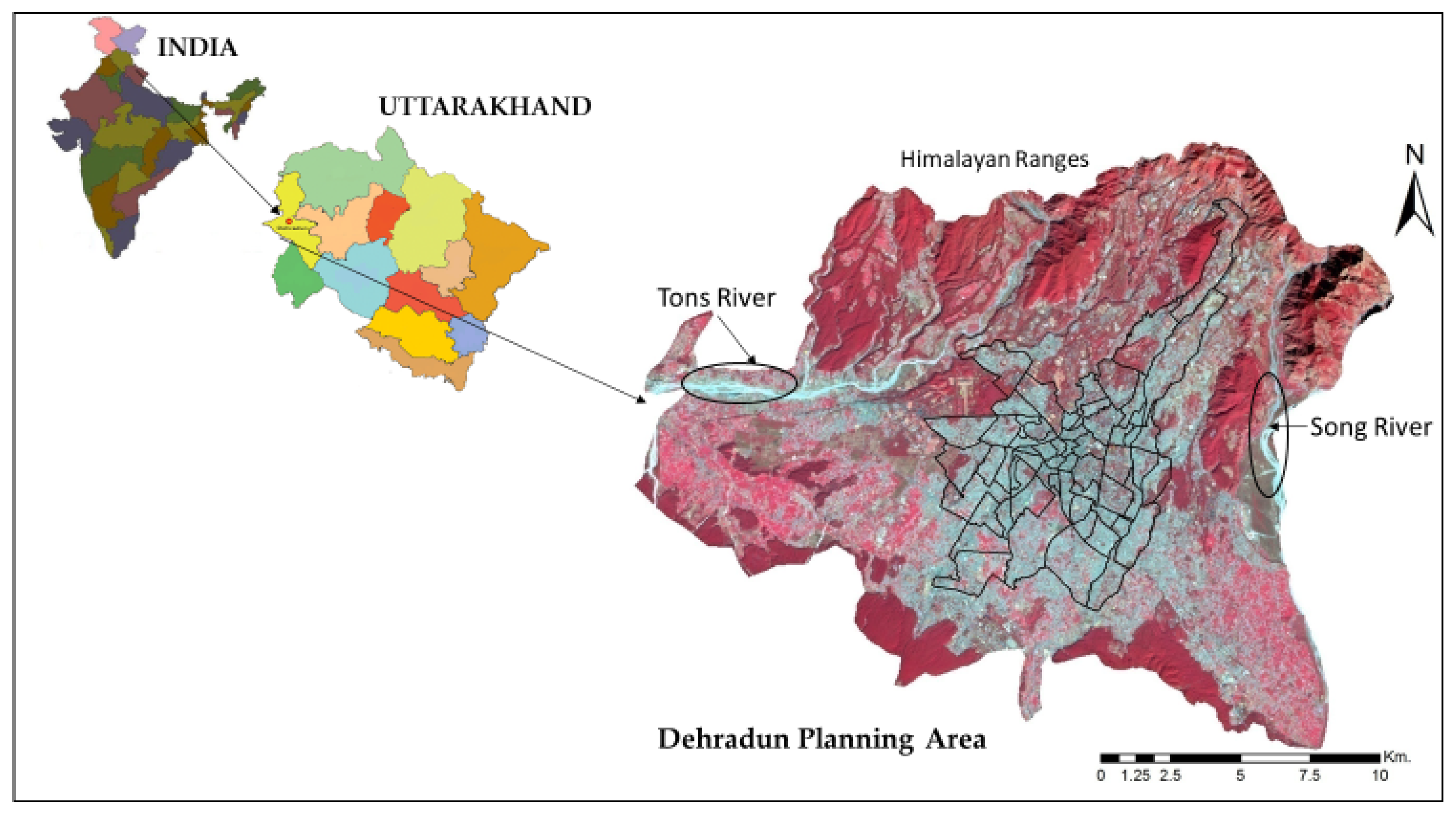
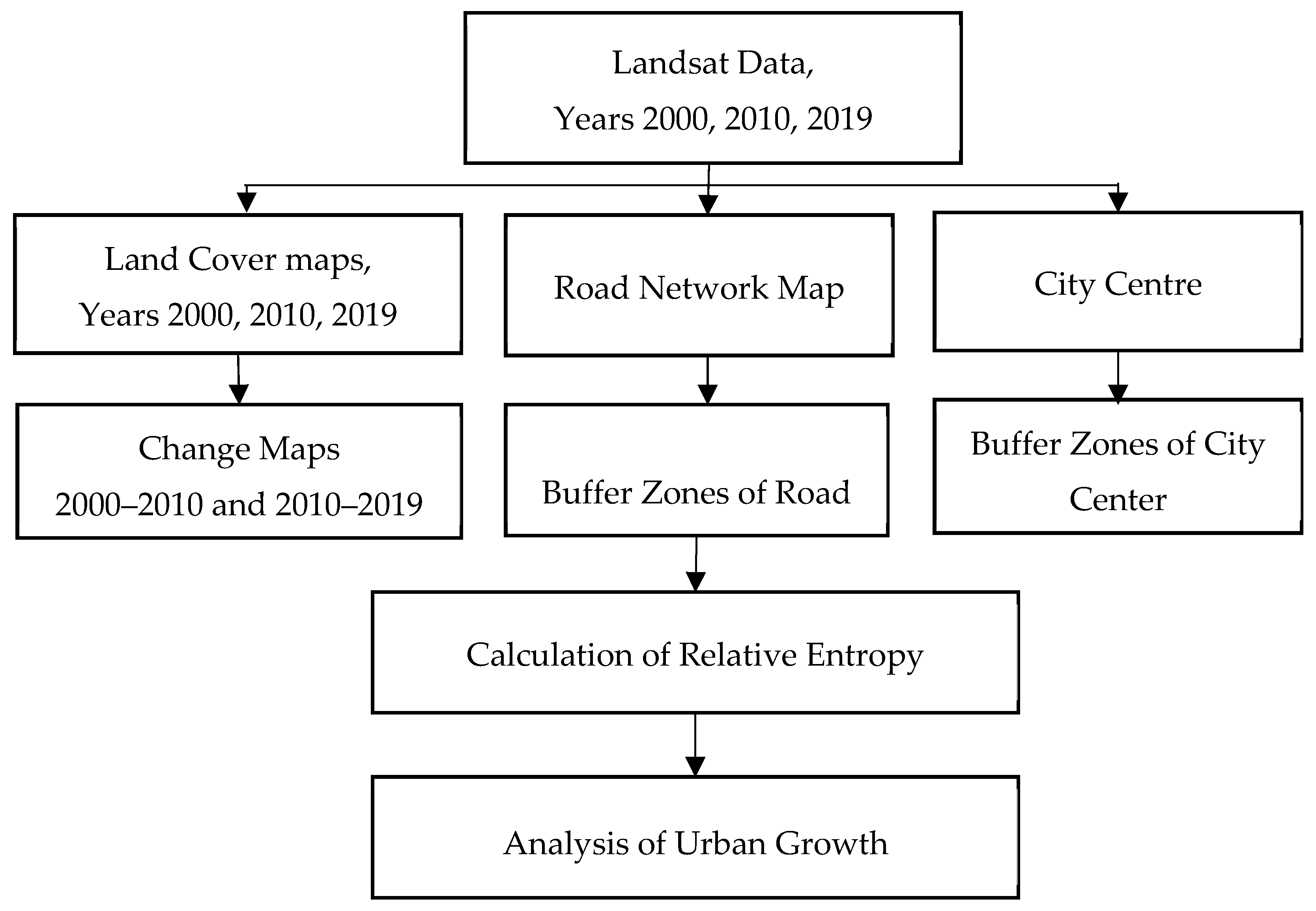

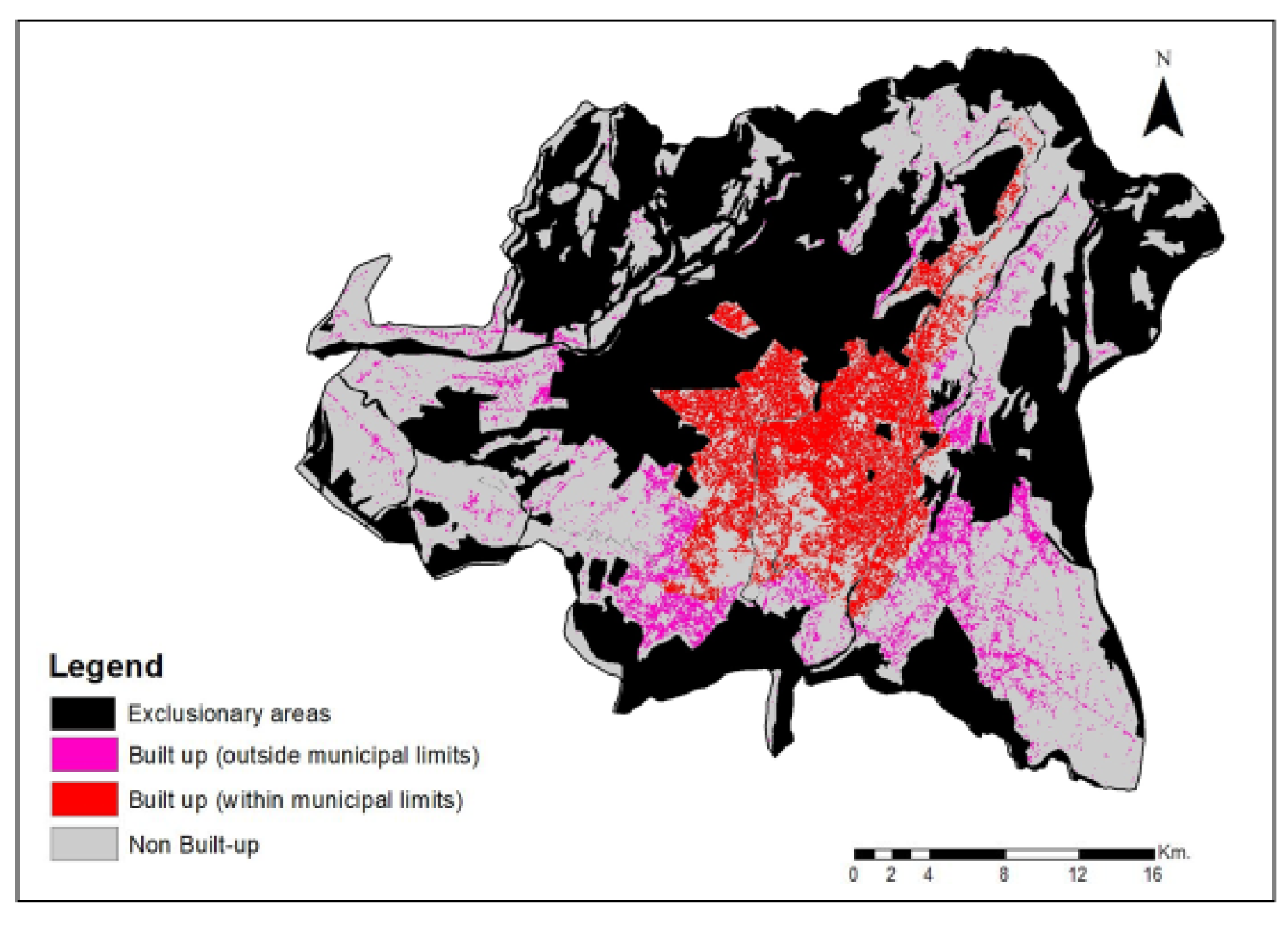
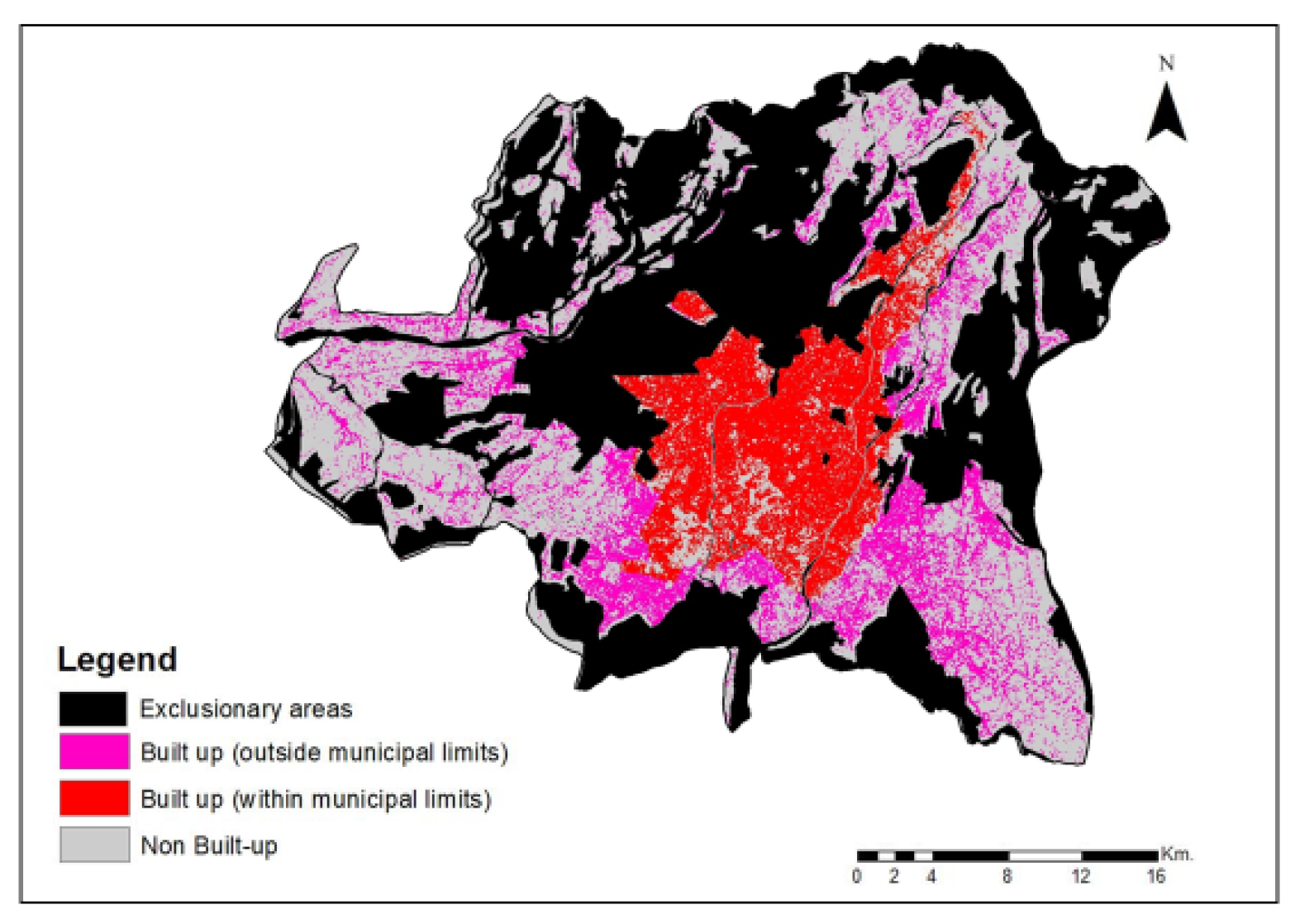
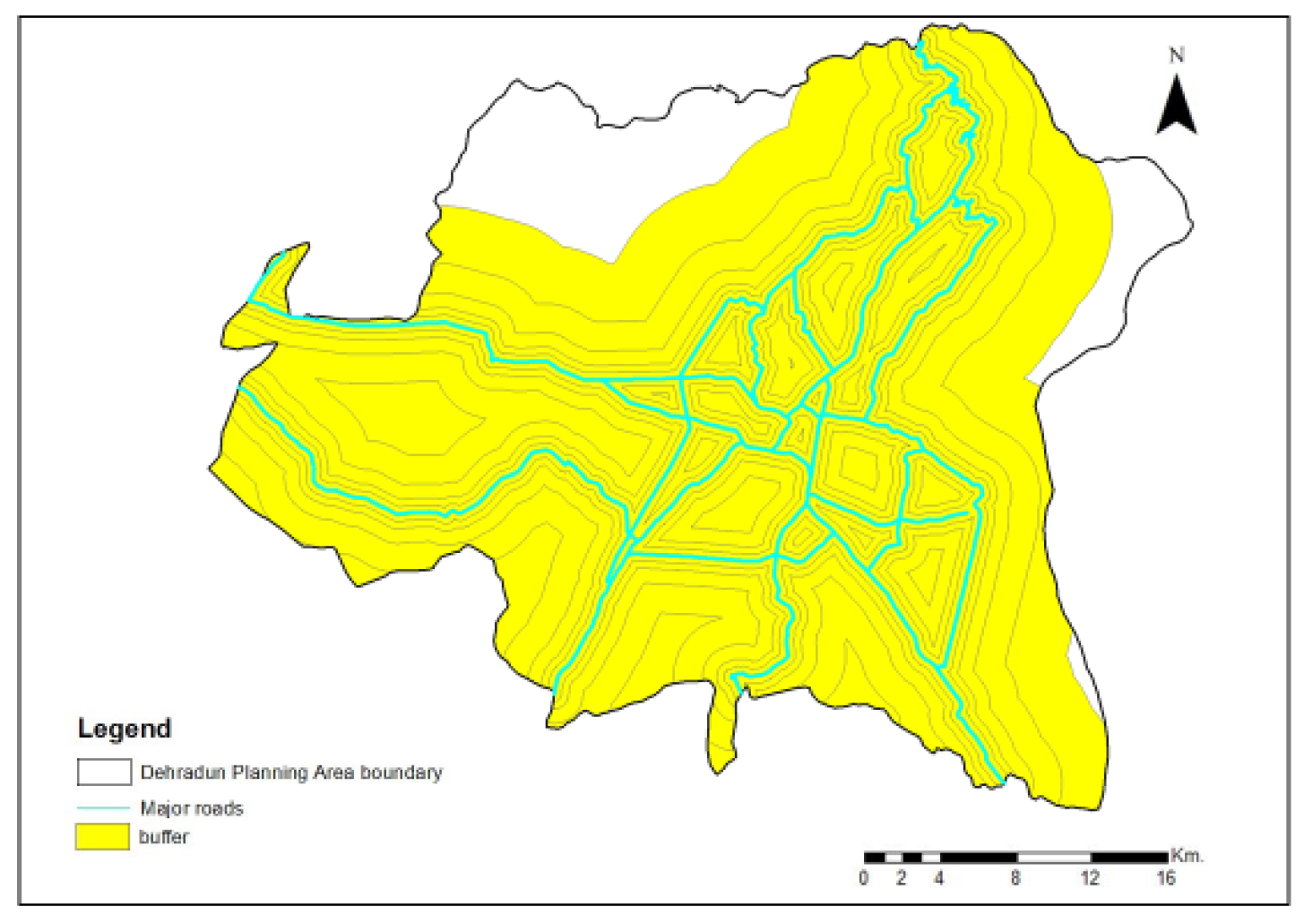
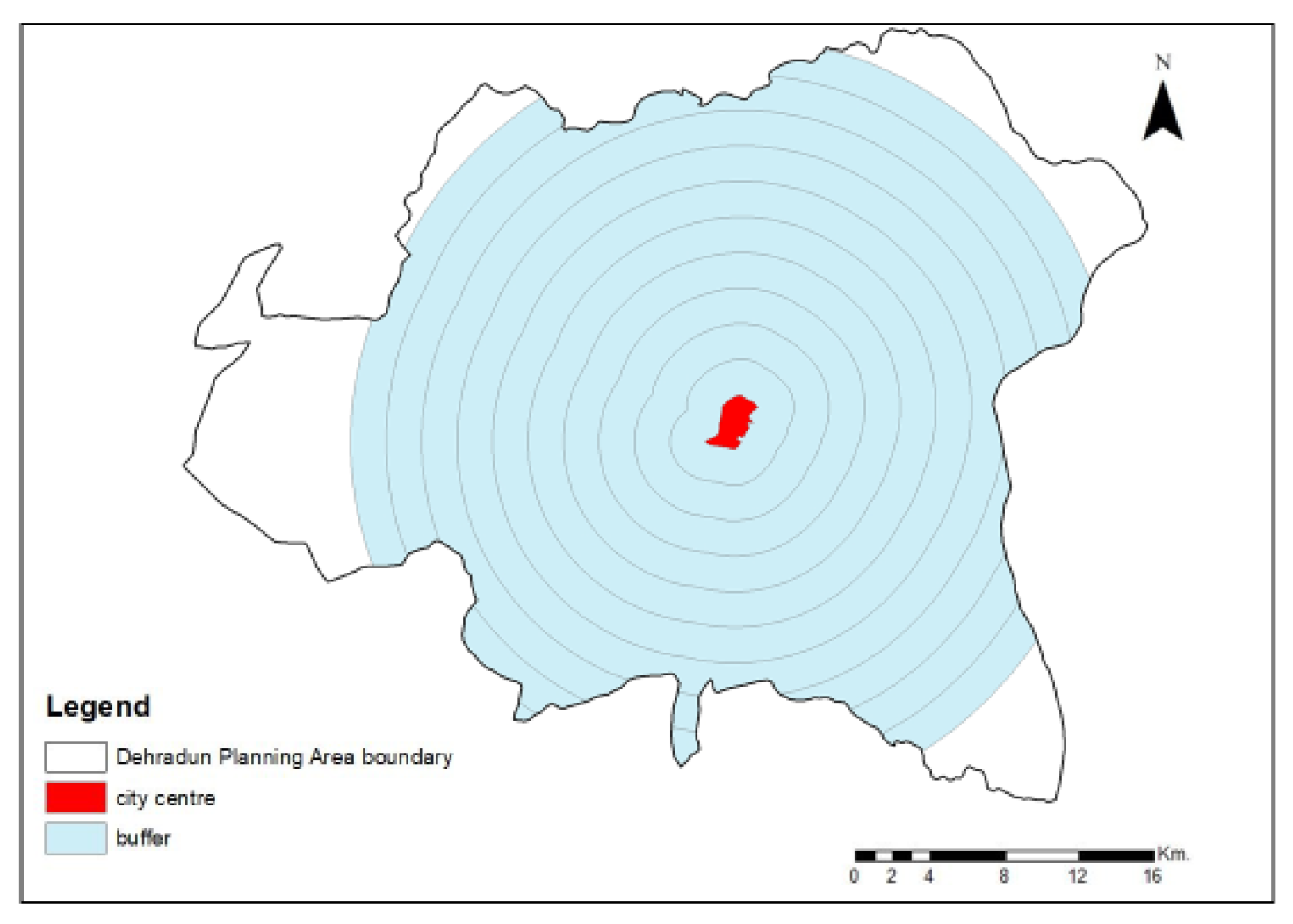


| Buffer Zones | Growth Area (m2) | p | log1/p | p*log1/p |
|---|---|---|---|---|
| Zone 1 (200 m) | 4,001,223.677 | 0.353 | 0.452 | 0.160 |
| Zone 2 (400 m) | 3,173,374.576 | 0.280 | 0.553 | 0.155 |
| Zone 3 (800 m) | 2,928,995.251 | 0.258 | 0.588 | 0.152 |
| Zone 4 (1600 m) | 1,212,356.831 | 0.107 | 0.971 | 0.104 |
| Zone 5 (3200 m) | 16,849.65951 | 0.001 | 2.828 | 0.004 |
| Period | Entropy with regard to Roads | Entropy with regard to City Core |
|---|---|---|
| 2000–2010 within municipal limits | 0.822 | 0.761 |
| 2010–2019 within municipal limits | 0.812 | 0.804 |
| 2000–2010 outside municipal limits | 0.945 | 0.831 |
| 2010–2019 outside municipal limits | 0.966 | 0.837 |
Publisher’s Note: MDPI stays neutral with regard to jurisdictional claims in published maps and institutional affiliations. |
© 2019 by the authors. Licensee MDPI, Basel, Switzerland. This article is an open access article distributed under the terms and conditions of the Creative Commons Attribution (CC BY) license (https://creativecommons.org/licenses/by/4.0/).
Share and Cite
Nautiyal, G.; Maithani, S.; Bhardwaj, A.; Sharma, A. Entropy-Based Approach for the Analysis of Spatio-Temporal Urban Growth Dynamics. Proceedings 2020, 46, 17. https://doi.org/10.3390/ecea-5-06670
Nautiyal G, Maithani S, Bhardwaj A, Sharma A. Entropy-Based Approach for the Analysis of Spatio-Temporal Urban Growth Dynamics. Proceedings. 2020; 46(1):17. https://doi.org/10.3390/ecea-5-06670
Chicago/Turabian StyleNautiyal, Garima, Sandeep Maithani, Ashutosh Bhardwaj, and Archana Sharma. 2020. "Entropy-Based Approach for the Analysis of Spatio-Temporal Urban Growth Dynamics" Proceedings 46, no. 1: 17. https://doi.org/10.3390/ecea-5-06670
APA StyleNautiyal, G., Maithani, S., Bhardwaj, A., & Sharma, A. (2020). Entropy-Based Approach for the Analysis of Spatio-Temporal Urban Growth Dynamics. Proceedings, 46(1), 17. https://doi.org/10.3390/ecea-5-06670






